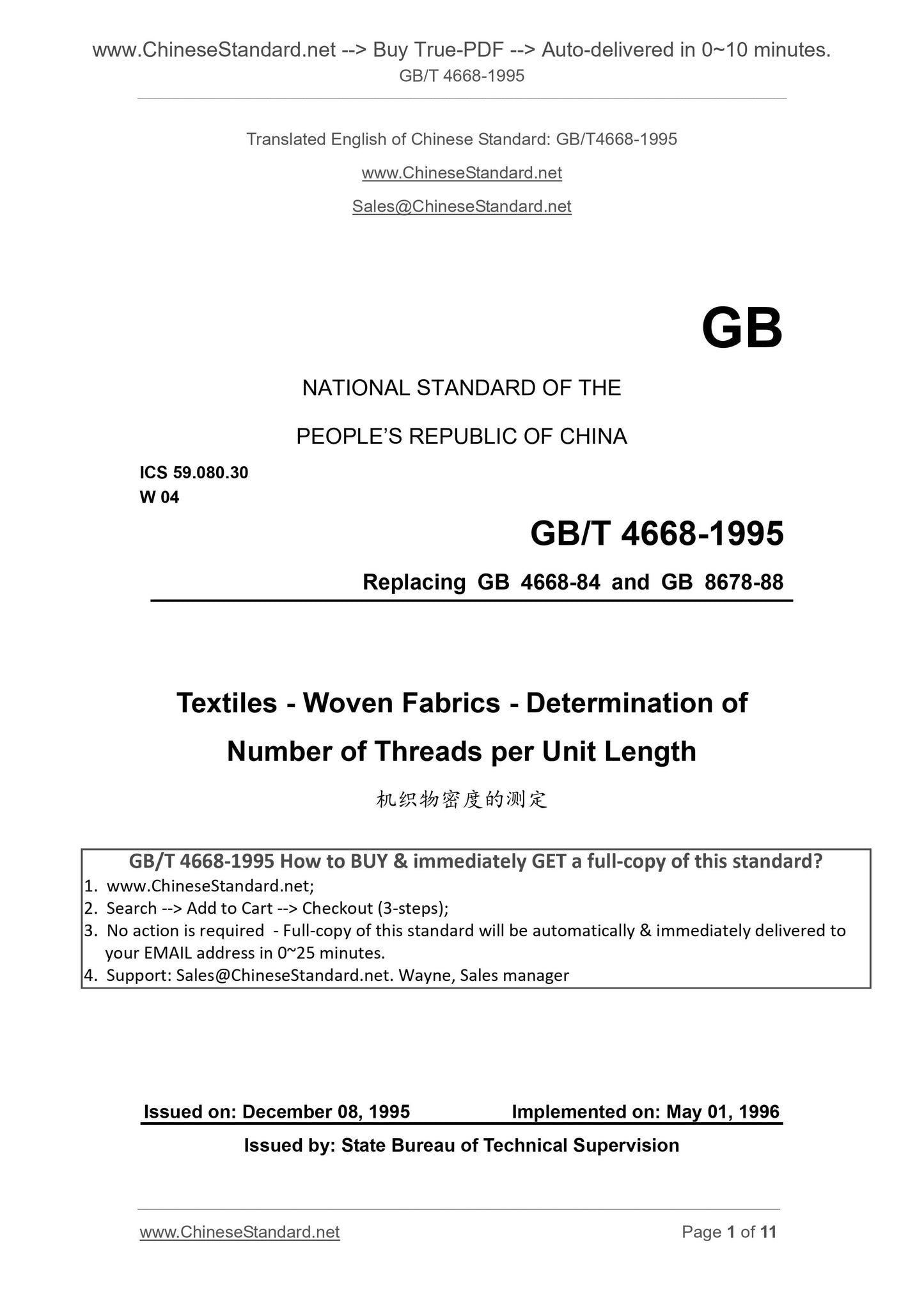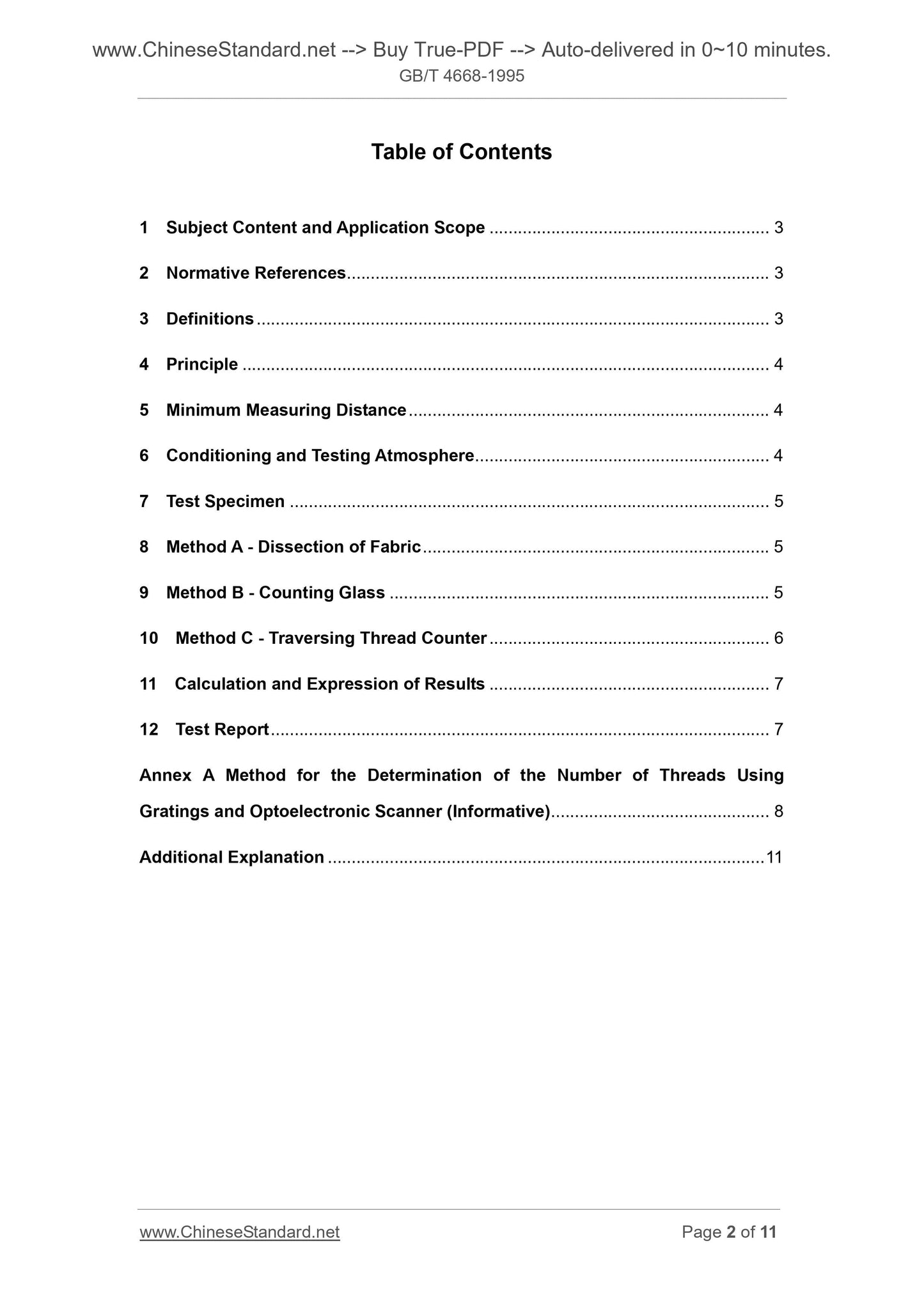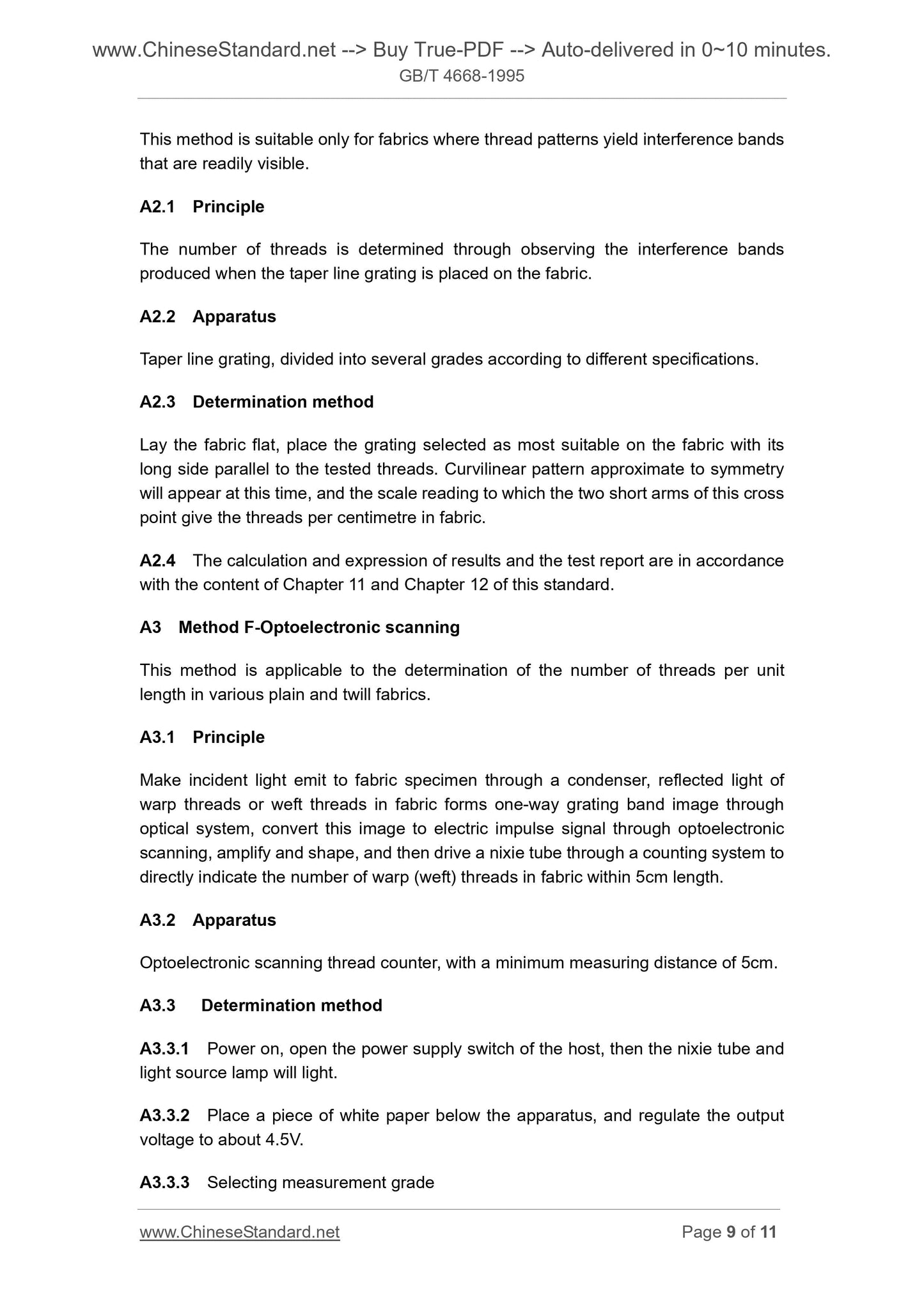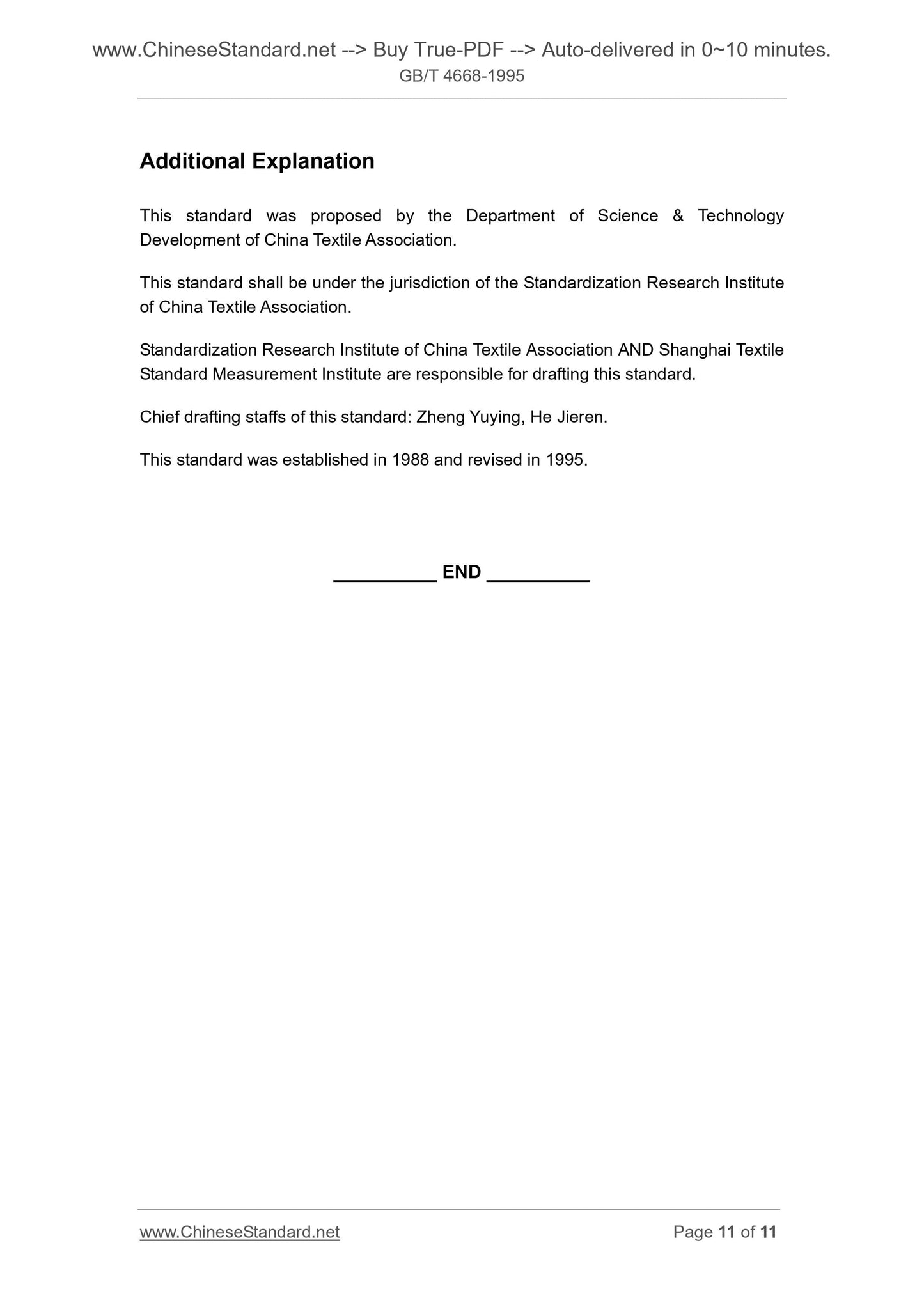1
/
of
7
www.ChineseStandard.us -- Field Test Asia Pte. Ltd.
GB/T 4668-1995 English PDF (GB/T4668-1995)
GB/T 4668-1995 English PDF (GB/T4668-1995)
Regular price
$70.00
Regular price
Sale price
$70.00
Unit price
/
per
Shipping calculated at checkout.
Couldn't load pickup availability
GB/T 4668-1995: Textiles - Woven fabrics - Determination of number of threads per unit length
Delivery: 9 seconds. Download (and Email) true-PDF + Invoice.Get Quotation: Click GB/T 4668-1995 (Self-service in 1-minute)
Newer / historical versions: GB/T 4668-1995
Preview True-PDF
Scope
This standard specifies three methods for the determination of number of threads perunit length in woven fabrics. Any of the three methods may be used, the choice
depending on the character of the fabric. However, in case of dispute method A is
recommended.
This standard is applicable to the determination of number of threads per unit length in
various woven fabrics.
Method A. Dissection of fabric, suitable for all fabrics, in particular, complicated
weaves.
Method B. Counting glass, suitable for fabrics with more than 50 threads per
centimetre.
Method C. Traversing thread counter, suitable for all woven fabrics.
Note. Three methods using parallel line gratings, tapered line gratings and optoelectronic scanning density meter for
the determination of number of threads per unit length in woven fabrics have been given in Annex A (Informative) for
information. These methods have low measurement accuracy and limitation but can be used to give rapid and rough
estimates.
Basic Data
| Standard ID | GB/T 4668-1995 (GB/T4668-1995) |
| Description (Translated English) | Textiles - Woven fabrics - Determination of number of threads per unit length |
| Sector / Industry | National Standard (Recommended) |
| Classification of Chinese Standard | W04 |
| Classification of International Standard | 59.080.30 |
| Word Count Estimation | 7,791 |
| Date of Issue | 12/8/1995 |
| Date of Implementation | 5/1/1996 |
| Older Standard (superseded by this standard) | GB 4668-1984; GB 8678-1988 |
| Quoted Standard | GB 6529 |
| Adopted Standard | ISO 7211-2-1984, NEQ |
| Issuing agency(ies) | State Bureau of Technical Supervision |
| Summary | This standard specifies three methods of measuring the density of the woven fabric. The fabric characteristics, the choice of one of them. However, in case of dispute, the proposed method A. This standard applies to the determination of various types of woven fabric density. |
Share













